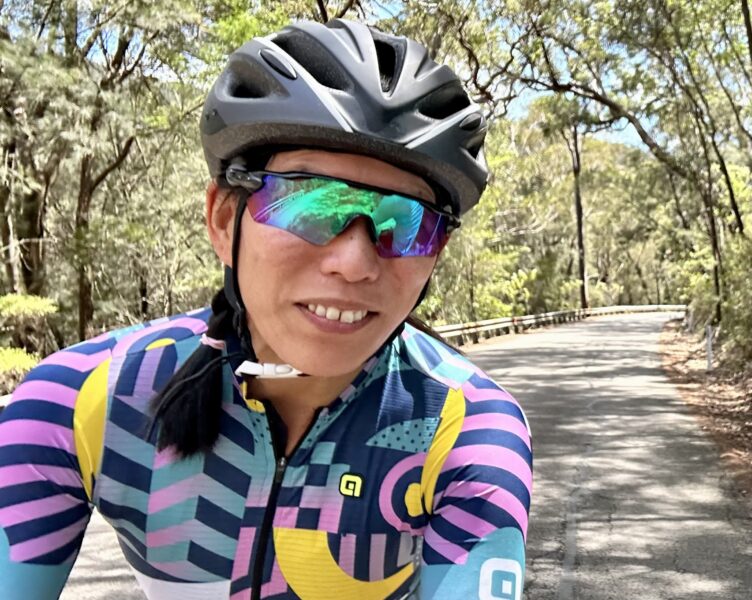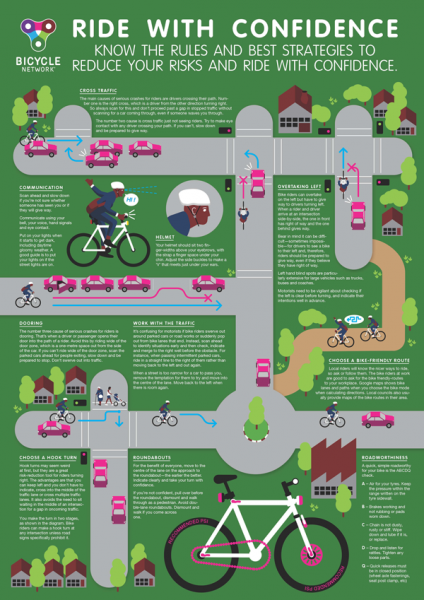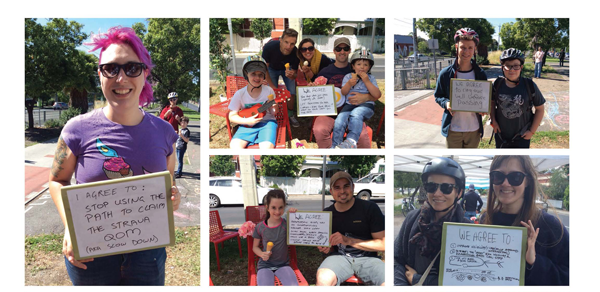Sharing a car
Sharing and hiring cars combines brilliantly with bike riding. Simon Vincett reports.
I ride a bike for most of my transport but cars are definitely useful for some tasks and trips. My clever wife, before we were married, starting sharing a car with a couple of friends. They each realised they only needed a car occasionally and it was more economical to split the costs of registration and maintenance. I joined the collective and it became one car between four adults (and now one child).
Two key things make our car sharing easy and convenient:
- a shared online calendar where bookings are listed (we use Google Calendar)
- a bike rack in the boot of the car at all times.
When one of us wants to use the car we check the shared online calendar to see if it’s free and make a booking. Usually we have made bookings in advance for occasions when we know we’ll need the car, such as to drop my father-in-law home after dinner or for collecting garden supplies on the weekend.
The car stays at the house of the last borrower and might need to be collected. When we started sharing our friends lived a few streets away and it was straightforward to walk and pick up the car. Now they have moved about 3km away, so it’ s most convenient to ride to collect the car. A tow-ball mounted bike rack stays permanently in the boot to make this possible: you roll up, chuck the bike on the rack and off you drive.
For petrol, we fill it when it needs it and because we’re friends we make an effort to be fair about filling it up according to our usage. Tollway bills go to the registration holder who passes them on to the party responsible. We share an RACV membership that is held in one name. The best thing is that fixed costs – maintenance, registration, auto-club membership – are split between two couples.
If there’s a clash of bookings – and it’s surprising how infrequently it happens – we call each other and can usually work out a solution. For driving holidays it’s usually necessary to hire a car rather than monopolise the shared car for a week or more, but with the money we save on not owning our own car this is not an extravagant expense.
Actually there is a third thing that makes the private car sharing work for our little collective, which is that we all think of our bikes as our primary transport – for shopping, for commuting and for most trips. We also use the good network of public transport options in our area. We only think of the car for long trips or to carry loads too big for the bike.
The private set-up is the cheapest way of car sharing. To help you locate people to join a set-up with you, you could join or start a Sharehood and offer or seek a car to share. Systems that are already set up are Flexicar in Melbourne and Sydney and GoGet in Brisbane, Sydney, Melbourne and Adelaide.
In the USA there are online peer-to-peer lending services where, instead of renting cars from a company, you pay an individual who has decided to rent his car out.
Tip – Transporting your bike by car
Your bike may fit in the back of your car (removing wheels might be necessary) but if you have more than one bike, they can get damaged. If taking bikes by car on a regular basis, a rack may be a good alternative.
Car bike racks come in a variety of forms using the towbar, roof racks or attaching using straps. They have capacity for two to four bikes depending on the variety you choose.
Tow bar racks either support the wheels of a bike, or clamp the bike by its tubes. They are easy to set up and take off, and are cheaper than roof racks, but a tow bar must be fitted. They may also obscure your licence plate, requiring a plate to be displayed at the back of the rack. Hand-made number plates are not allowed; you must either purchase an additional plate from your road authority, or take off your existing rear plate and use it on the rack.
To avoid being fined, remember that stoplights, tail lights and indicators must not be obscured, the number plate must be illuminated at night, and the rack must be removed if bikes aren’t being transported.
Disadvantages of these racks include that the bikes are more vulnerable to collisions, access to the boot and towing options may be limited, the bikes are more vulnerable to theft, and some bikes can be damaged by clamping their frame.
Carbon fibre bikes can’t be transported in racks that clamp the frame because the clamp will crush the tubing. You can use the clamp type of bike rack if you buy a product which creates a cradle to support the frame. Carbon fibre bikes can also be transported with a roof-rack system.
Roof racks support the bike by one or both wheels; some require the front wheel to be removed, with the forks clamped on to the front rack. While bypassing the need for a tow bar, new number plate and lighting, bikes are more exposed to the elements on these racks, there is an increase in wind resistance and therefore petrol costs, they can be awkward to use depending on your strength and height, and low-hanging trees and garage entrances can be a hazard.
Nylon webbing straps that secure a rack to the rear of your car are a flexible option, and are easily transportable, but are not as robust as rear racks. Nylon straps are more likely to damage the car’s bodywork, may require a licence plate and lighting to be displayed at their rear, and are the racks your bike is most likely to work itself free from.
As well as the clamp, strap or bolt that attaches your bike to the rack, secure it with an occy strap or cord as a back-up. You don’t want your bike coming off at high speed and getting damaged and causing a traffic hazard.
Nylon toe straps that secure your foot into toe clips make ideal fasteners for all sorts of jobs, and are a great alternative to cable ties. They can be reused many times, and are excellent for securing things to your frame when transporting your bike; because of their soft material, they won’t cause unsightly rub marks on your precious paintwork. The straps are cheap, and can be bought in bulk from bike shops.
If you’re travelling a long way with a bike on a bike rack (say more than 100km), plan regular stops to check that the bike is still firmly attached.
This post is for day 29 of Ride On‘s June riding challenge.
Connect with Ride On on Facebook or Twitter.
Ride On content is editorially independent, but is supported financially by members of Bicycle Network. If you enjoy our articles and want to support the future publication of high-quality content, please consider helping out by becoming a member.











